Sufiyan Khatri - Ajrakh Block Printing

Sufiyan khatri, a 10th generation ajrakh master block printer, at his studio in Kutch, Gujarat
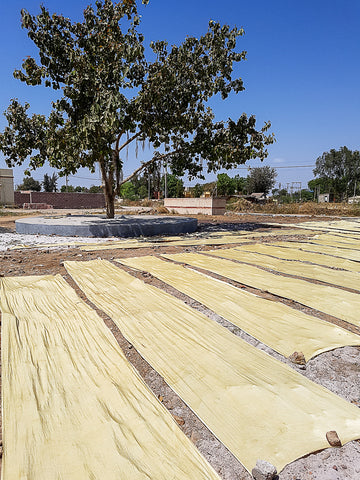
Myrobalan-dyed lengths of fabric lay out to dry in the hot desert sun, March 2018.
After a long chat with Dr. Ismael Khatri about the history of Ajrakh block printing and digging through piles of intricately printed beautiful fabrics, we left with hopes of a future collaboration.
In June 2021, after preparing the designs for our first collection, we reached out to Dr. Khatri's son Sufiyan with a design idea.

Anna wears our block printed Bib Smock. The pattern was made using a resist printing technique, and Himalayan Rhubarb dye.

Natural dyes are exclusively used in Ajrakhpur.

A collection of natural dyes

An artisan in Ajrakhpur, mixing dyes for printing.
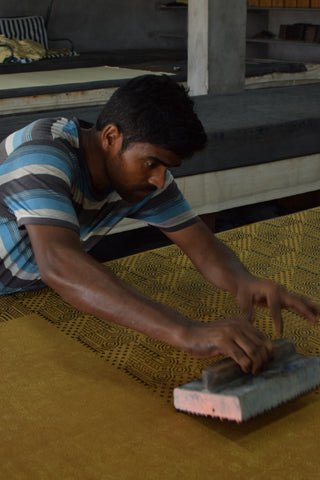
An Ajrakh artisan presses the natural dyes into the fabric using a hand carved teak block June 2023
As a child, Sufiyan grew up listening to lots of stories about Ajrakh, it’s traditions
and philosophy.
He got involved with the craft by the time he was 14 years old as an apprentice to his grandfather, who shaped his thinking and understanding of the craft.
He taught him to learn and enjoy the process of Ajrakh art, and to place importance on engaging with the craft and with the person/designer he is working with, rather than on the mere end transactional value.
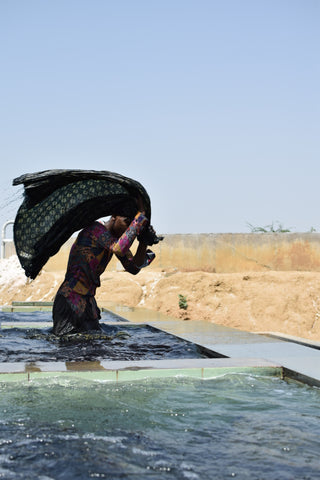
An artisan washes a length of indigo dyed fabric at the workshop in Ajrakhpur. June 2023
For Sufiyan and his community, Ajrakh is a way of life.
'Working in the Ajrakh craft workshops not only gradually leads to an increase in important skills, but also acts as an important medium of education, nourishment and philosophy, and also provides a great chance to become an entrepreneur depending on how well an artisan can imbibe the Ajrakh techniques. So it’s very important for the Khatri community that the craft sustains by bringing in a fine balance between production (business), quality and innovation.'
Sufiyan Khatri, Master Ajrakh Block Printer
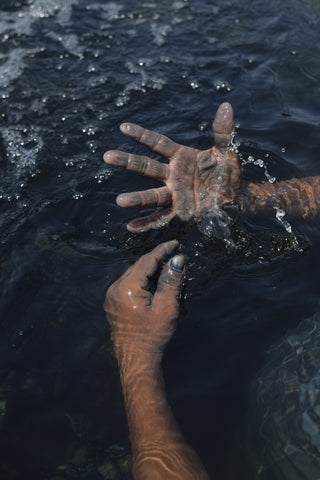
Water tinged with natural indigo dye during the rinsing process. June 2023
Sufiyan printed our fabrics using two distinct techniques:
a) using only the outline block for a resist print. A printing resist is a substance used to resist the dye colour - leaving the printed area blank. The outline was printed onto the fabric using the resist, the fabric was then dyed to produce the background colour, and then the resist was removed to reveal the motif. This technique was used in our indigo shawl and our mustard smock dress.
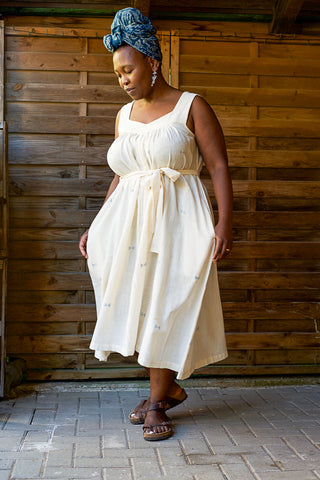
Seatile wears our Kala Cotton dress with one of the shawls Sufiyan's team block printed with indigo as a headwrap.
b) The second method used both the outline block and the background fill block. The outline was done with a dark colour, while the background fill was done with a natural dye called himalayan rhubarb. The flowers and leaves were left undyed.
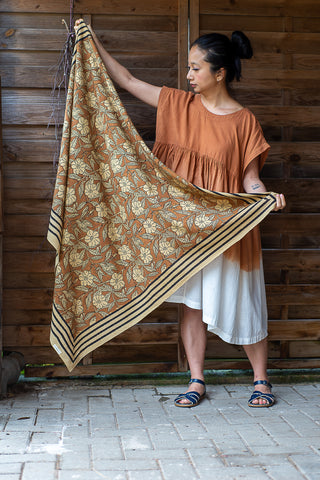
Our shawl dyed with Himalayan Rhubarb.
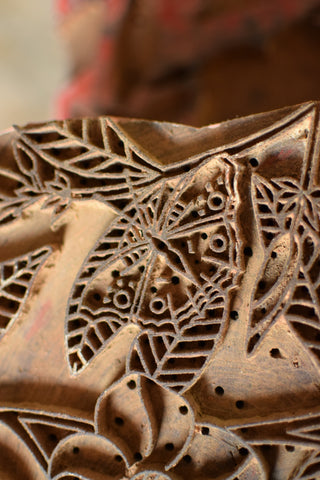
The outline of our design, skillfully carved into teak wood by master artisans.

A door in Ajrakhpur, Gujarat. March 2018.

Agricultural fields in Ajrakhpur in the Kutch Desert of Gujarat. March 2018.

An Ajrakh artisan prints onto fabric using a teak hand carved block, June 2023.
Shop our Block Prints
Meet our Block Carvers